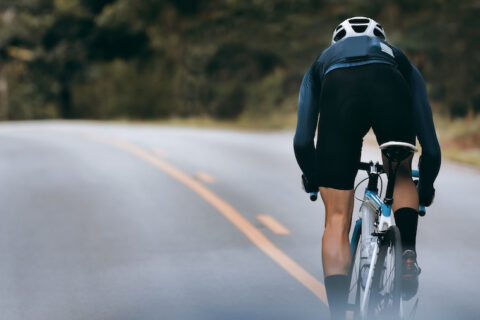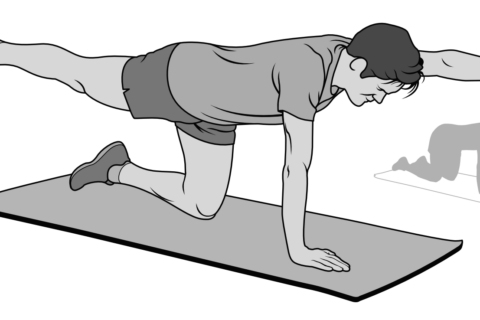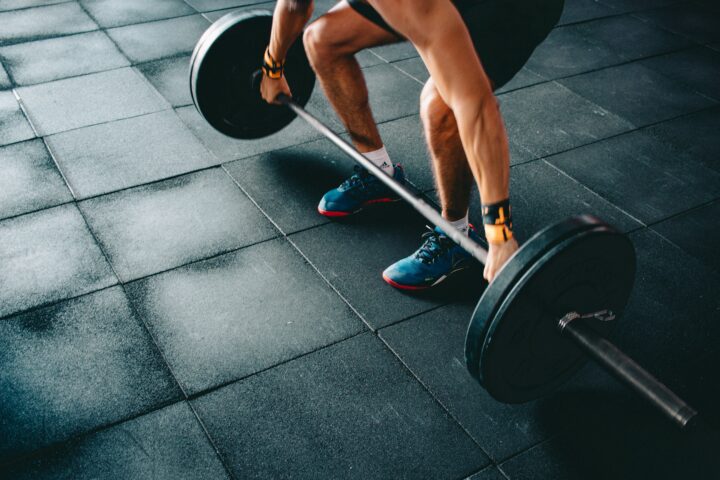In Week 1 of our Strength Training Series, we guide you through a routine that includes deadlifts, back squats, rows, and side planks.
Video Transcript
Ryan Kohler 00:04
Here in week one, we’re going to start off with four really classical foundational type movements. We have a deadlift, a squat, a row, and a plank. We’ll hit total body with a good focus on the lower body. If you haven’t been doing much lifting in recent weeks or months, be sure to start off on the lighter side. Again, with that focus on form being the key aspect, choose form over weight whenever necessary. Also, I’ll provide some different tips where you can make the exercise easier, where you can regress it or we can progress it to make it a little bit harder. So with that, let’s go off and start our deadlift.
How to properly deadlift
Ryan Kohler 00:49
For this week, our deadlift is going to entail three to four sets of eight to 10 reps with a weight that you can lift easily with good form. So let’s get started.
What we’ll do is address the bar with our feet about hip width apart, we’ll take our hands and put those into position, just outside of our feet. From there, we’re gonna bring our shoulders down and back and create a nice neutral spine here. When you do that, you may feel the bar click a little bit as you create that tension. From that position, you’re going to drive the feet hard into the ground, and slide that barbell up over the legs. Then once it gets above the knees, we bring the hips forward to finish that lift. Now to return, we hinge at the hips, let that bar slide back down the legs. Once it’s below the knees, we bend our knees and return down to the floor.
Three red flags to watch out for when doing deadlifts
Ryan Kohler 01:35
There are a few red flags that you’ll want to watch for as you’re doing this exercise, as it’s a compound lift involving a lot of coordinated motions, be careful of at least these three things:
Not having a neutral spine
As we go down here, and we start to move, one red flag that we want to watch for is not having a neutral spine. If you find yourself doing this, and then trying to pull from there, that’s not a safe position to start in. Be sure you create that tension, draw yourself into that neutral spine, and let those shoulders get drawn down and back.
Not being close enough to the bar
The second one is the only to be not being close enough to the bar. If you’re sitting way back here, and then you start pulling the bar this way, that’s a lot of undue tension on the back. You want to let that bar come in tight, and really allow it to slide on the legs with the movement.
Drive from the ground up
The last one is going to be if you’re starting here, a good position, don’t start the movement by raising up the hips first. Drive the knee, drive the feet into the ground so everything moves in a coordinated fashion.
How to do a barbell back squat
Ryan Kohler 02:38
We’re here for our barbell back squat. We’re looking here this week at two to three sets and eight to 10 reps, here’s the setup. We’ve got our barbell here on the rack, we’re going to come in and I like to try to find this little knurling here on the bar where there’s a smooth area, and I usually put my index or middle finger right around there. Then what I’m going to do is step under the bar, place it right around the meaty part of my shoulders, what I want to avoid doing is getting it right on the spine, because you’ll feel that and you’ll know it’s in the wrong spot.
Then we’ll come under it, and we’ll step up with the bar, take a step or two back, and then we’ll start to find our foot position. For this you can kind of make the foot position, whatever you want it to be, you might be a little bit more specific and say, “Hey, I want to mimic a cycling stance,” for example. Or you can get a little bit wider, let the toes turnout. It’s really up to you and kind of individual how you want to approach this part of it.
But from here, we start upright, and what we’re going to do is first move back with the hips. The hips begin the movement back as we hinge them and we start to lower ourselves down to a comfortable position. Then once we get there, we just return back up leading with the hips again.
Common mistakes when doing barbell back squats
Ryan Kohler 03:47
One common mistake I’ll see people make is that they’ll start moving with the knees. They’ll be here, but then they’ll go like this, and bend the knees first. Notice my hips haven’t moved. To correct that, always make sure you stick your butt back as if you’re trying to reach back for a chair that’s just a little bit too far. That’ll ensure you’re in a good position.
Another common mistake is wanting to look up as you descend. We’ll see some folks where they go down, but they want to keep that head up. They started going to looking up toward the ceiling. To avoid that, tuck that chin in, and just let your head travel down with the bar, and then right back up to the top.
Alternative exercises
Ryan Kohler 04:26
One alternative if you find that the bar is either too heavy, or it’s just too uncomfortable, is that you can take two dumbbells, set them up here on your shoulder level, and then go through the same motion down and back up like that.
Rowing with good form
Ryan Kohler 04:44
Next we have our row. There’s a lot of ways you can do this, I’m going to do it today with a band and standing. But if you have access to a seated row machine at the gym, you can do that. Or if you have access to a bench you can do a bent over row where you pull weight up. For this one, we’re going to look at two to three sets of eight to 10 reps. To set up here, I’m going to take my band, wrap it around the squat rack here. Again, you can do this standing or seated.
I like this because as cyclists or runners, we tend to have this hunched over posture. This allows us to work on a nice, tall athletic posture. We’re going to start here, get our hands in this rowing position, find a good amount of tension. Then we’re going to set our shoulder blades down and back and just draw the weight back. Then bring it back to the bottom here, like that. Out back here, and what we want to think about is pulling from the elbows, so not so much just pulling from the arms, but imagine that the weight is attached here and not here. You’re going to draw those elbows down and back, and then come back nice and slow to return to the bottom.
How to side plank
Ryan Kohler 05:48
Okay, now we have our side plank, this is going to be one of our core stability exercises. To start this, we will go and place one arm down on the mat here with our shoulders just above the elbows. Then we’ll step ourselves into a nice long plank position on our side, we’ll hold this for 30 to 60 seconds, and do two to three sets total.
Ways to adjust the side plank
Ryan Kohler 06:08
If you’re newer at this and you’d like to start easier, what you can do is go down to your knees here and just bend them over here. That way you have a shorter platform that you’re working with. Finally, if you want to make this more difficult, you can go back to the starting position, go here and then add hip abduction to it, just like that. We’ll do that on both sides to three sets, 30 to 60 seconds holds per set. Alright, that’ll do it for this week. Hopefully you learned some new movements that you can work into your routine. We’ll see you next time!



